HC LED screen network reported
In June, international security giant Tyco, together with China's general generation, released its full range of US power display and control products, including DLP/LCD and small-pitch LEDs, and expressed optimistic about the future of small-pitch LEDs; video and security leaders, During the 2016 national tour, Keda Company released Jingyan ultra-small-pitch LED display, including two series of products - ultra-small-span LED splicing screen with unlimited splicing & LED high-definition large-size display.
Small-pitch LED display generally refers to the indoor spacing of the point spacing (ie pixel spacing = two LED lamp bead center spacing, denoted by P) below 2.5mm, mainly including P2.5, P2.0, P1.9 , P1.6, P1.2 and other models, the current minimum distance has reached 0.7mm, P0.9 has begun mass production. Because the small-pitch LED has the advantages of no seams (DLP technology can currently achieve 0.2mm seam), good display effect, long service life, etc., and the cost has decreased rapidly in recent years, it has gradually replaced the price of indoor large-screen wall The foundation has gradually entered the commercial field and is expected to enter the civilian sector in the future.
Why do security giants enter the ultra-small-pitch LED display market? The small-pitch LED display technology will quickly enter indoor applications in the next few years due to its advantages such as no seams, excellent display effects, continuous semiconductor technology advancement and cost reduction. It is expected to replace the original indoor large-screen display technology and fill the technical gap in a phased manner. Security and video companies have a better understanding of the needs of end users, and there is no reason not to pay attention to this market.
The evolution of LED display technology
In the field of LED display, the earliest appearance is the monochrome and two-color display. The packaged lamp bead is composed of a matrix screen, which is mainly used to display text information. It is still widely used in trains, bus stations and other business halls. Compared with other display technologies, LED display has the advantages of self-illumination, excellent color reproduction, high refresh rate, power saving and easy maintenance.
With the advancement of LED technology, three packages of red, green and blue light are included in a packaged device to form three primary colors. By adjusting the current of the three chips to achieve different intensity of light for each chip, it is possible to realize Thousands of colors of display. With the shrinking of the LED full-color display package device and the rapid decline of the entire screen cost, products with smaller spacing continue to enter the market.
LED display industry chain introduction
From the perspective of the LED display industry chain, the core components from upstream to downstream mainly include RGB three-color optical chips, full-color package devices, driver ICs, multi-layer PCB boards, cabinet kits, and display cards (send/receive cards). And video control systems, etc., involving more related companies. Among all the components, the highest cost ratio is the packaged device, that is, the lamp bead. The second component is the PCB board used to carry the lamp bead, and the driver IC that controls the lamp bead display (shading, grayscale). .
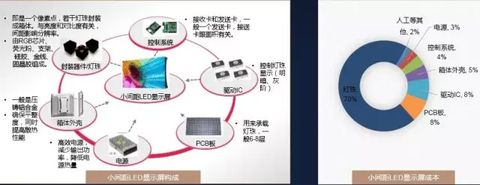
China's LED display market structure
LED small pitch display product application areas, including video conferencing, display, advertising, command and dispatch, monitoring center and so on. China's leading LED display companies, Liard and Chau Ming Technology, are not only growing faster than foreign competitors, but their overseas business accounts for an increase in operating income. Security companies represented by Haikang, Dahua, Keda and Tyco enterprises will enter the market and will have a great impact on the market. Because of the joining of security companies, it is able to combine security and other related practices, and better capture customer needs, and promote its applications from video surveillance, video conferencing, command and dispatch and other fields.
LED display in the field of public safety
In order to further improve the level of public safety, the public security system of the entire city is increasingly dependent on video surveillance, and the number of video acquisition devices distributed throughout the country is growing rapidly. The input signal is mainly the video signal returned from the video (camera), which is mainly used to maintain public safety and respond to emergencies.
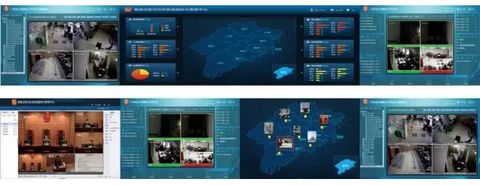
Indoor large screen display mainstream technology
At present, the mainstream professional indoor large-screen display technology mainly includes DLP rear projection splicing, LCD splicing, PDP splicing, projection and fusion technologies, each of which has its own advantages and inevitable defects, occupying different types of indoors respectively. Large screen display application areas.
One: DLP rear projection splicing technology
DLP (Digital Light Processing) rear projection splicing technology is mainly used for professional indoor large-screen display applications. DLP technology was invented in 1987 by Dr. Larry Hornbeck, a scientist from Texas Instruments. After continuous improvement and upgrade, the current technology It has matured and is one of the mainstream projection technologies. It has a large market share in mid-to-high-end display applications.
Two: LCD / plasma (LCD / PDP) stitching technology
Use industrial grade products similar to those commonly used in our daily life as liquid crystal televisions (LCDs) or plasma televisions (PDPs) as splicing units, and add control systems to form large-screen splicing walls. The principle of these two technologies is quite different, but the biggest feature is that the cost is low, and it is widely used in the middle and low-end indoor large-screen display field.
Third: projection and projection fusion
Projection technology uses optical devices and some technologies to rearrange the light emitted by the backlight into the image to be displayed, and then project it onto the projection cloth. According to the position of the person and the projector, it can be divided into front projection and rear projection. the way. DLP rear projection splicing technology is also a projection technology, to distinguish it from here, mainly refers to the front projection.
Mainstream indoor large screen display technology comparison
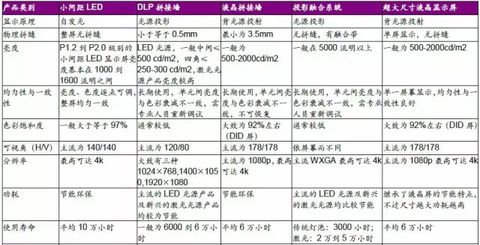
DLP and LED splicing large screen technology comparison
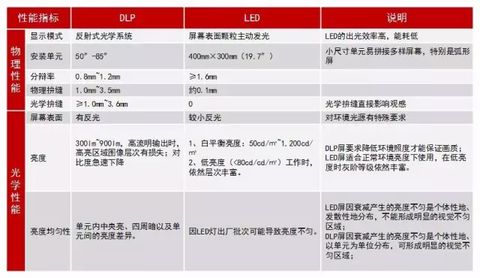
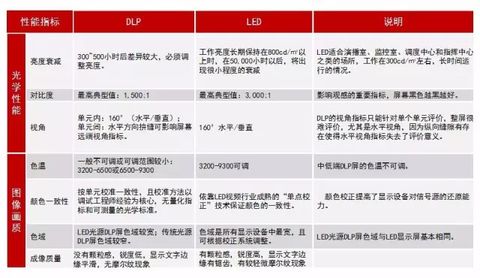
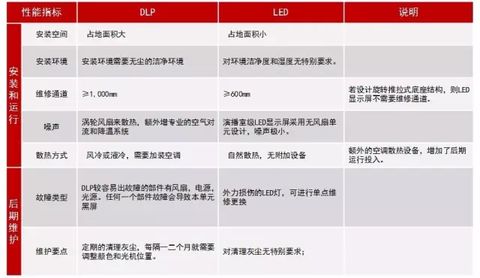
Advantages and disadvantages of small pitch LED display technology
Compared to other mainstream indoor large screen display technologies, small pitch LED displays have the following distinct advantages.
Solve the seam problem
The characteristics of the human eye are very sensitive to the "unique" thing. When the large screen plays a complete picture, even if the DLP splicing wall can be made less than 1 mm, the user can easily see it. To the "black line" between the display units, because of the physical distance between the different display units, there is also "optical stitching": the brightness and divergence direction of the light on both sides of the seam are often different, these differences are easy It is noticed by the human eye that the LCD/PDP splicing technology is more obvious in this respect.
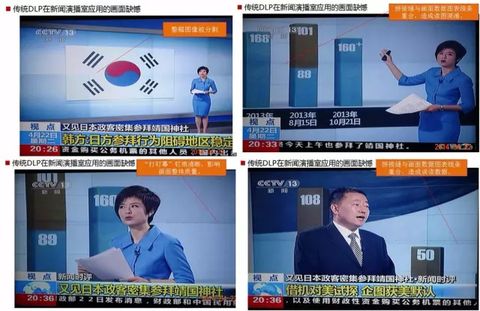
Semiconductor technology advancement and scale effect jointly promote cost reduction
As discussed above, small-pitch LED display technology is an extension of LED technology, and its high-cost components are almost all semiconductor technology products, including chips, packaged devices, driver ICs, control systems (transmit/receive cards), etc. These have shown a rapid decline in costs over the past few years.
Ability to maintain consistent display across the screen
At present, the mainstream indoor large-screen display technology is also difficult to overcome the problem that the display effect of the whole screen is inconsistent caused by the attenuation of the light source brightness. For example, for the DLP rear projection splicing wall, even if the current latest LED light source is used, there is a case where the brightness of the light source is attenuated with the increase of the use time, and the attenuation degree of each light source is different, resulting in each display unit. The brightness is inconsistent, and the “yin and yang face†will appear when the face is displayed. This problem also exists in the LCD/PDP display.
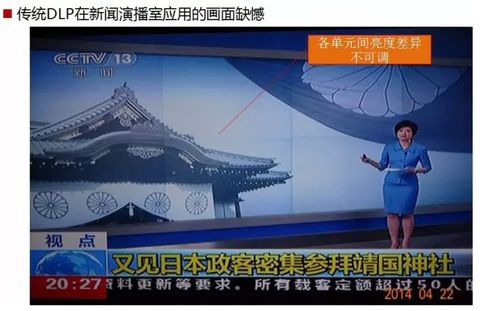
Have better display and color reproduction
The small-pitch LED display has a wide range of color temperature adjustments from 2,500k to 10,000k, and has strong advantages in certain indoor special applications. In addition, the small pitch LED display has a higher gray level and a high refresh rate.
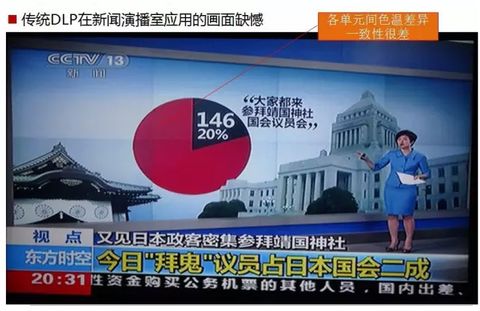
LED display resolution limitations and cost issues
DLP, LCD, and PDP all have higher resolutions and achieve 2k HD resolution on a 60-inch display screen. The pixels of the small-pitch LED display consist of beads, so the resolution depends on the bead spacing and screen size. In HD (1,920 × 1,080), the 1.2mm product requires 110 inches. Compared with DLP, LCD, and PDP, the resolution of small-pitch LED display is not dominant, but it is basically in line with the requirements of high-definition display.
Small pitch LED display replaces the original large screen display
The small-pitch LED display technology will enter the indoor large-screen display field with its unique advantages, and realize all or part of the replacement of the original technology. In high-end applications such as the command room, control room, etc., the small-pitch LED display technology has no seams at all, which can maintain display consistency for a long time and will replace DLP splicing technology.
In the application of monitoring centers such as public security and smart cities, small-pitch LED display is expected to become the preferred technology for the central main screen. The characteristics of the monitoring center application are that there are a large number of multi-channel signal sources from the monitoring probes, which are generally displayed on both sides of the central main screen, and each signal is displayed as a small screen. When you need to focus on a certain video signal, or an emergency such as an alarm on a certain road, you need to connect the signal to the central main screen to view the details. In addition, the central main screen is used for command and dispatch, and is used for scheduling and deployment.
For large video conferences, professional studios, etc., small-pitch LED displays will be a perfect replacement for traditional display technologies due to their advantages, but the cost sensitivity and display requirements vary from field to field.
Flexible size: standard 16:9 specification, flexible stitching, more suitable for mainstream security monitoring and video conferencing video display applications;
“Low-light and high-grayâ€: At low brightness, the grayscale level is still rich in layers, suitable for indoor security monitoring and video center applications;
High consistency: The unevenness of brightness caused by LED screen attenuation is distributed individually and divergently, and can not form obvious visual unevenness areas like DLP; relying on the mature "single point correction" technology of LED video industry to ensure color Consistency.
Summary: Kodak is not surprised to announce the small-pitch LED display, because Kodak has two product lines for security monitoring and video conferencing, and both product lines have a large number of large-screen scenes. After Samsung, Haikang, and Dahua, Tyco and Kodak all exerted ultra-small-pitch LED displays, which proved that the “end-to-end†solution for security companies is getting more and more in place. Each display technology has advantages and disadvantages. The advantages of LED ultra-small spacing are obvious, and the disadvantages are gradually improving. It will increasingly erode the space of traditional display and become the mainstream of large-screen display in the future!
High-quality shop recommendation: Shenzhen Weiao Video Technology Co., Ltd.
Get new information immediately, understand the market dynamics, welcome to pay attention to HC LED screen information service.
HC LED screen information service
Editor in charge: Cao Jinyu
Satin Fabric,Soft Satin Fabric,Stretch Satin Fabric,Polyester Satin Fabric
Shaoxing Linkloom Import and Export Co.,ltd. , https://www.linkloomtextile.com